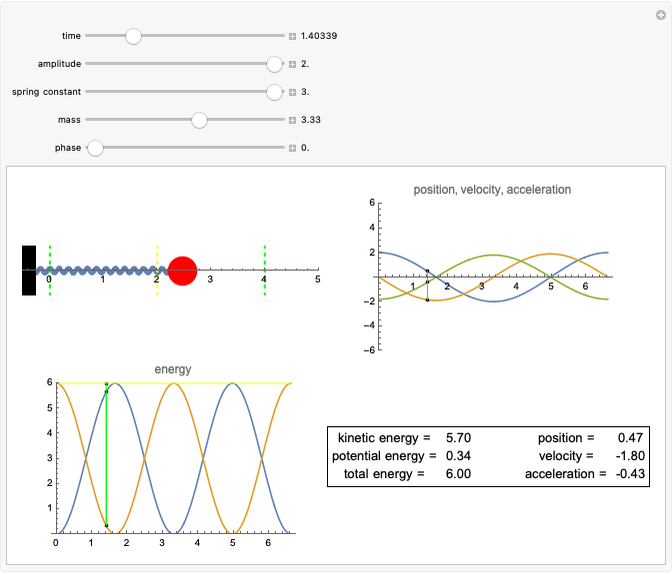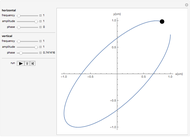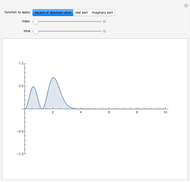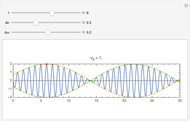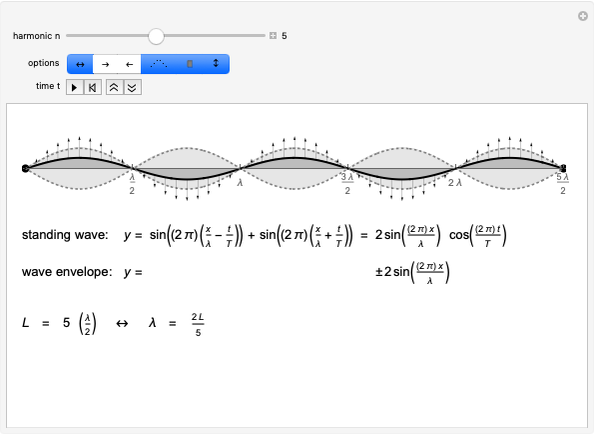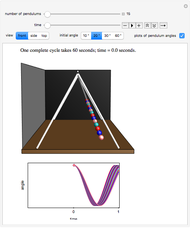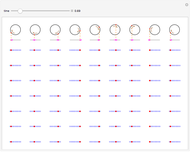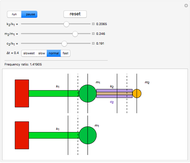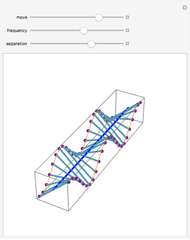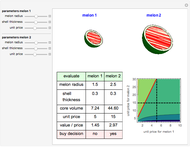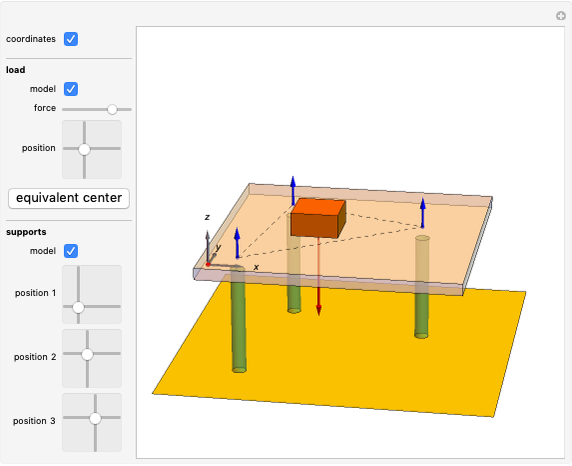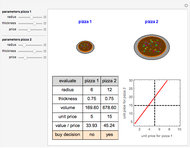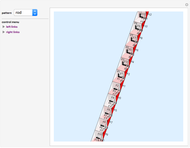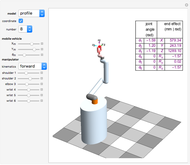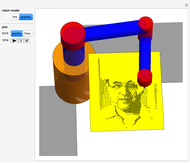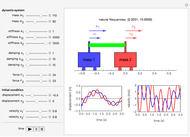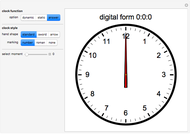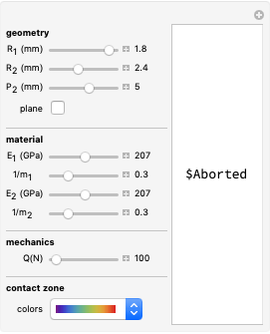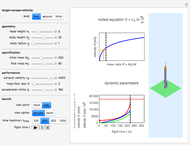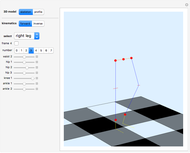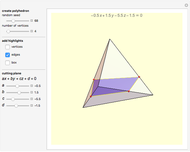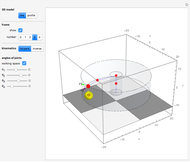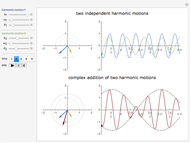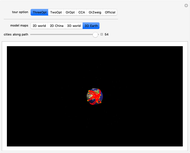Complex Addition of Harmonic Motions and the Phenomenon of Beats

Requires a Wolfram Notebook System
Interact on desktop, mobile and cloud with the free Wolfram Player or other Wolfram Language products.
Harmonic motion can be represented by either trigonometric or complex exponential functions. Any vector  in the
in the  -
- plane can be written as a complex number:
plane can be written as a complex number:  , where
, where  is the amplitude (also called the norm) and
is the amplitude (also called the norm) and  is the phase (also called the argument). The projection onto the
is the phase (also called the argument). The projection onto the  axis of such a rotating vector is the imaginary part of
axis of such a rotating vector is the imaginary part of  . According to Euler's formula, a complex number can be expressed as
. According to Euler's formula, a complex number can be expressed as  , where
, where  denotes the frequency of rotation in the counterclockwise direction and
denotes the frequency of rotation in the counterclockwise direction and  is time. Multiplying by
is time. Multiplying by  shifts the phase.
shifts the phase.
Contributed by: Frederick Wu (October 2010)
Additional contributions by: Wei Li
Open content licensed under CC BY-NC-SA
Snapshots
Details
Snapshot 1: shows how two harmonic motions are added using complex numbers (left graphics) and a time series plot (right graphics)
Snapshots 2 and 3: show the beat phenomenon at different frequencies when the frequencies of the two harmonic motions are close to each other
The phenomenon of beats is often observed in machines, structures, and electric power engineering. For example, it occurs in machines when the forcing frequency is close to the natural frequency of the system.
Reference
[1] S. S. Rao, Mechanical Vibrations, 4th ed., New York: Pearson, 2004 pp. 43–53.
Permanent Citation
"Complex Addition of Harmonic Motions and the Phenomenon of Beats"
http://demonstrations.wolfram.com/ComplexAdditionOfHarmonicMotionsAndThePhenomenonOfBeats/
Wolfram Demonstrations Project
Published: October 5 2010










